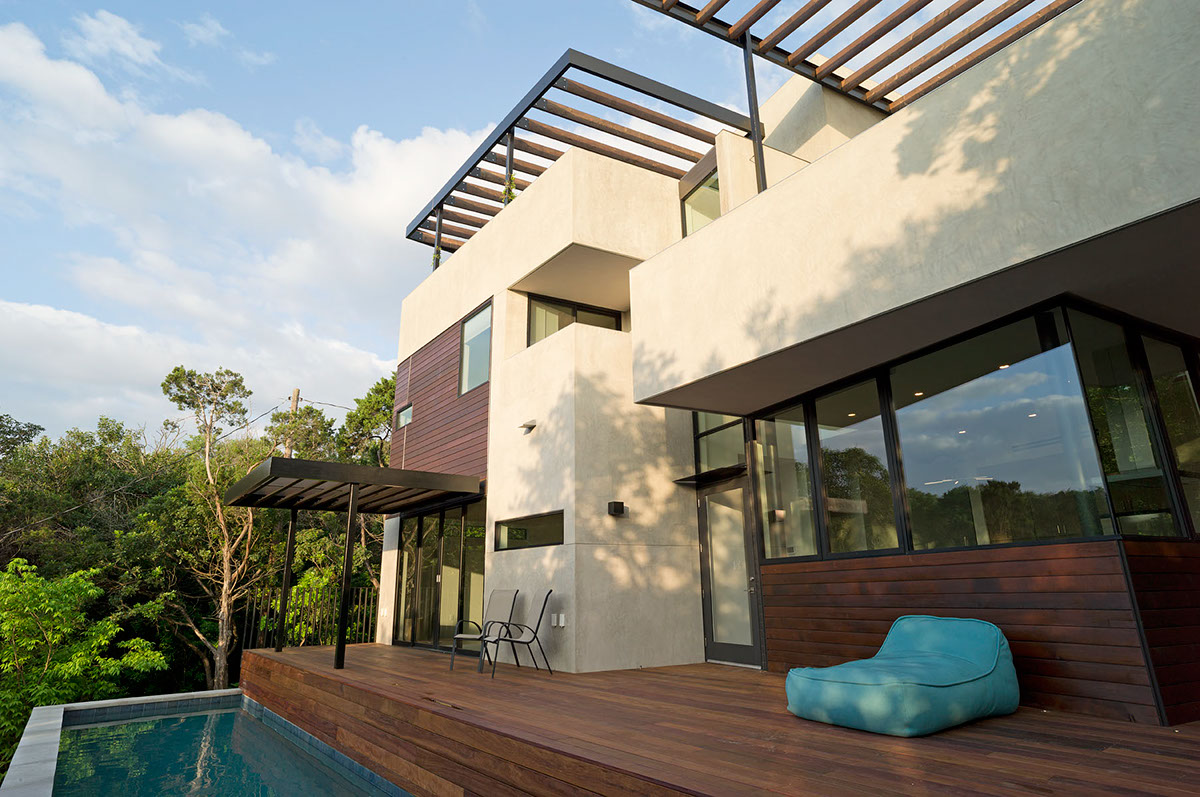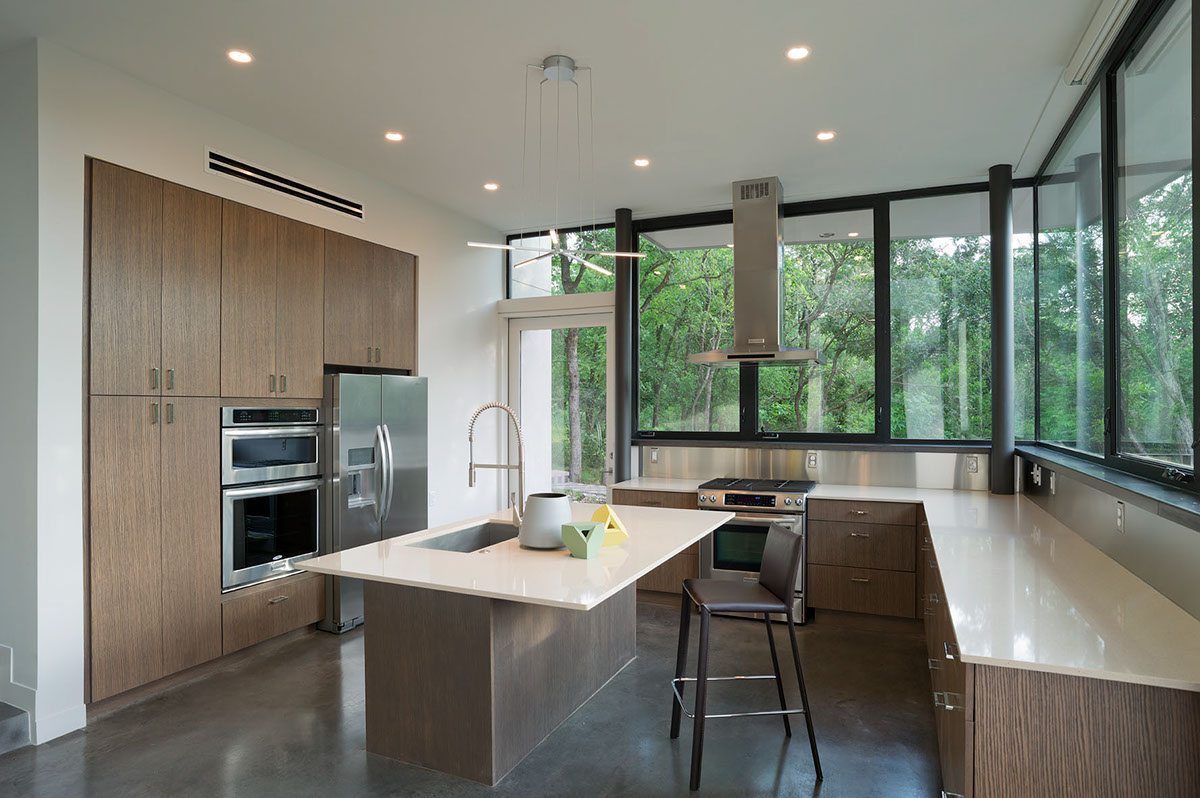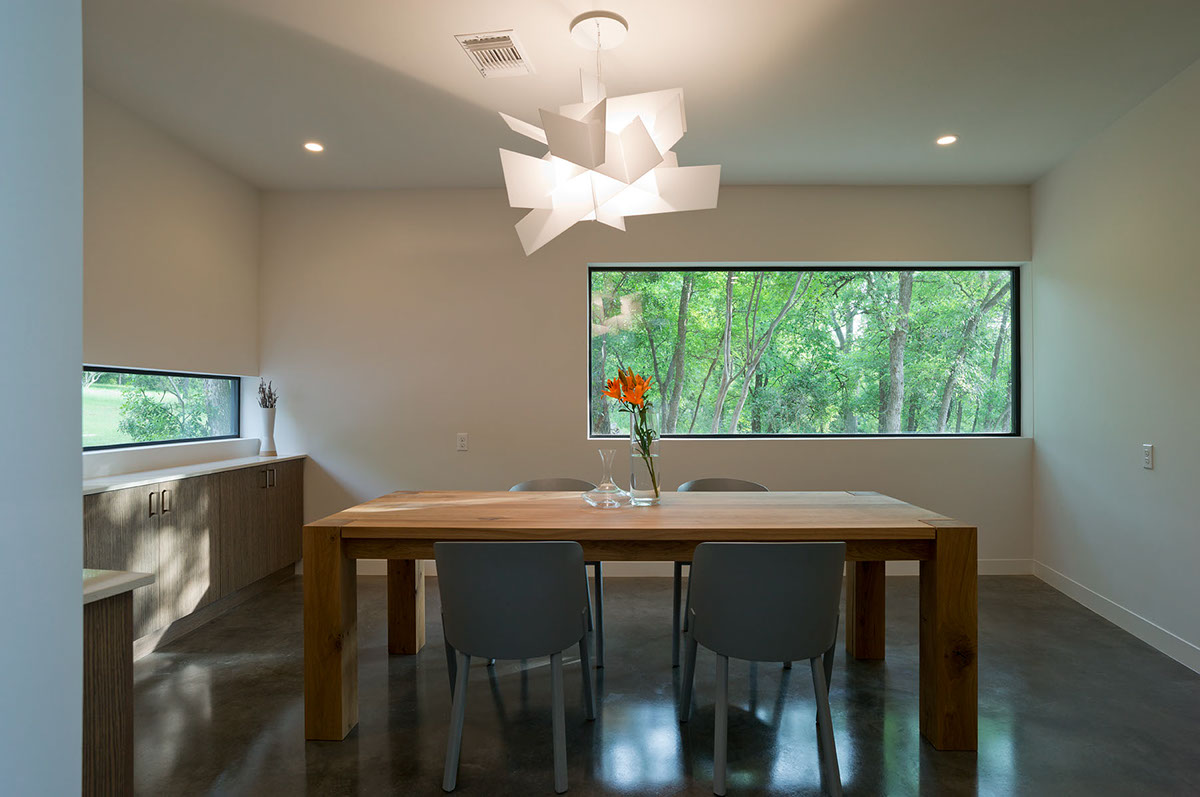




This single family residence is a deconstructed limestone cube with a rotated internal grid. The narrow three story entry axial canyon brings natural light deep into the heart of the house. Dramatic shadow cast on the interior canyon wall quietly reveal the passage of time. Subtle level changes and carefully configured window openings gradually carve out space from the limestone cube, becoming more open as one ascend towards the sky, eventually giving way to outdoor terraces shaded by cantilevered louvers which further break down the overall massing.
The house is situated on a steep hillside above a dry creek. The formal genesis is threefold. Naturalistic, historic & programmatic forces shape the house concurrently; In relation to it’s natural setting, the house resembles large limestone boulders often chanced upon in the hill country by hikers. Their natural beauty sculpted by gradual wind & water erosion over millions of years. Since Texas used to be under a pre-historic ocean, ancient coral reef and marine life forms or even dinosaur tracks are fossilized and encapsulated in time. (For example the Guadalupe Mountain is the largest known Permian fossil reef stretching 400 miles. )
Historically this house is a tentative attempt to explore the textile block legacy of Wright’s work. While researching the California Romanza work we were inspired by a stone lantern made with design of a single textile block from the Freeman house. The notion that the DNA of a house can be captured in a single building block, establishing a relationship between the whole and the parts seems to be a marginalized idea we were interested in investigating.
These ideas were overlayed with the logistical and programmatic requirement of the clients, as well as relationship to the geometry of the existing building below. Even though the sizable lot is close to an acre, the narrow shape and tight building setback lines impose stringent restriction on the building envelope.
Various stages of the design process were also inspired and informed by our impression of area stone quarry visits. The spatial porosity pay homage to unique regional places such as the Longhorn Cavern. This project will explore different textures of stone in a modern three dimensional re-interpretation of Renaissance concepts of rustication. The experience will be a gradual transition from rough large stone blocks of the exterior, to the progressively smoother interior surface. Attempts will be made to use recycled stone from the quarry boneyard wherever possible, inspired by the stone wall at Roberto Burle Marx’s ranch in Rio which salvaged stone from demolished churches.
The house is situated on a steep hillside above a dry creek. The formal genesis is threefold. Naturalistic, historic & programmatic forces shape the house concurrently; In relation to it’s natural setting, the house resembles large limestone boulders often chanced upon in the hill country by hikers. Their natural beauty sculpted by gradual wind & water erosion over millions of years. Since Texas used to be under a pre-historic ocean, ancient coral reef and marine life forms or even dinosaur tracks are fossilized and encapsulated in time. (For example the Guadalupe Mountain is the largest known Permian fossil reef stretching 400 miles. )
Historically this house is a tentative attempt to explore the textile block legacy of Wright’s work. While researching the California Romanza work we were inspired by a stone lantern made with design of a single textile block from the Freeman house. The notion that the DNA of a house can be captured in a single building block, establishing a relationship between the whole and the parts seems to be a marginalized idea we were interested in investigating.
These ideas were overlayed with the logistical and programmatic requirement of the clients, as well as relationship to the geometry of the existing building below. Even though the sizable lot is close to an acre, the narrow shape and tight building setback lines impose stringent restriction on the building envelope.
Various stages of the design process were also inspired and informed by our impression of area stone quarry visits. The spatial porosity pay homage to unique regional places such as the Longhorn Cavern. This project will explore different textures of stone in a modern three dimensional re-interpretation of Renaissance concepts of rustication. The experience will be a gradual transition from rough large stone blocks of the exterior, to the progressively smoother interior surface. Attempts will be made to use recycled stone from the quarry boneyard wherever possible, inspired by the stone wall at Roberto Burle Marx’s ranch in Rio which salvaged stone from demolished churches.



























